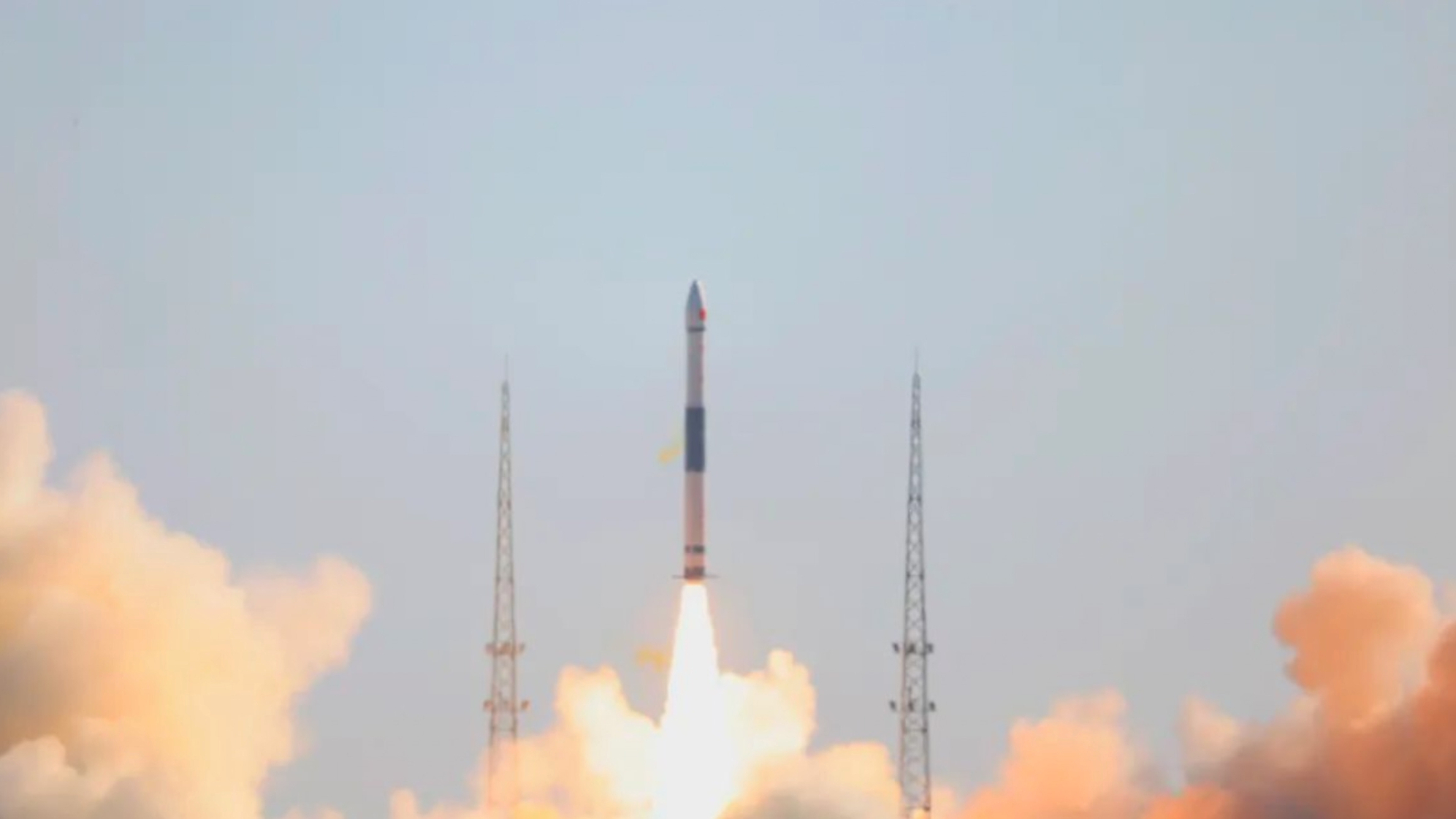Chinese Kuaizhou-1A rocket launches 4th mission in 18 days (video)
The Jan. 10 launch sent an experimental satellite to orbit.
China sent a classified experimental satellite into orbit last week with yet another launch of the Kuaizhou-1A solid rocket.
A Kuaizhou-1A lifted off from a transport erector launcher at the Jiuquan Satellite Launch Center in the Gobi Desert on Jan. 10 at 10:52 p.m. EST (0352 GMT and 11:52 a.m. Beijing time on Jan. 11).
The rocket's operator, Expace, confirmed launch success within the hour, announcing the payload to be a satellite called Tianxing-1 (02).
Related: China launches remote-sensing satellite for Egypt (video)

Little is known about Tianxing-1 (02). The satellite was described by the state media outlet Xinhua as to be used for experiments such as "space environment detection." The previous Tianxing-1 satellite, launched in June 2022, was likewise given only a short description. Its classified nature suggests it is at least partially for military customers.
Tianxing-1 (02) was developed by the Innovation Academy for Microsatellites of the Chinese Academy of Sciences (IAMCAS).
The mission was the fourth Kuaizhou-1A launch inside three weeks. The rocket, operated by Expace and developed by the state-owned defense giant China Aerospace Science and Technology Corporation (CASIC), launched three sets of four Tianmu-1 weather satellites across late December to early January.
Get the Space.com Newsletter
Breaking space news, the latest updates on rocket launches, skywatching events and more!
The small, solid-fueled launcher can carry a payload of 440 pounds (200 kilograms) to a 345-mile-high (700 kilometers) sun-synchronous orbit.
The launch was also China's third of 2024 and was followed shortly after by the sea platform-based debut launch of the commercial Gravity-1 solid rocket.
Join our Space Forums to keep talking space on the latest missions, night sky and more! And if you have a news tip, correction or comment, let us know at: community@space.com.

Andrew is a freelance space journalist with a focus on reporting on China's rapidly growing space sector. He began writing for Space.com in 2019 and writes for SpaceNews, IEEE Spectrum, National Geographic, Sky & Telescope, New Scientist and others. Andrew first caught the space bug when, as a youngster, he saw Voyager images of other worlds in our solar system for the first time. Away from space, Andrew enjoys trail running in the forests of Finland. You can follow him on Twitter @AJ_FI.









